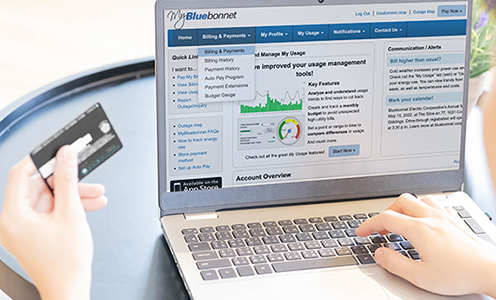The cooperative way
Recent news
Five top options on the home battery market
EnergySage is an online database that helps consumers identify average energy battery-storage system costs by size, top battery models and nearby storage system installers. The database was launched in 2013 with help from the U.S. Department of Energy to provide consumers with a platform to do comparison shopping for a solar energy system. Get information on energysage.com, and type in your ZIP code to find the nearest installers. Estimated battery prices do not include installation, but you can find an installer to get a custom quote through EnergySage’s website (scroll to Marketplace).
The five most frequently referenced batteries in the EnergySage database are:
Enphase Energy IQ 10
A lithium-ion phosphate battery with a 10.5 kilowatt-hour capacity that can provide 3.84 kilowatts of continuous power, enough to operate an air-conditioning system for one hour. It comes with a 10-year warranty. The 346-pound battery is about 26 inches tall, 42 inches wide and has a depth of 12½ inches. Battery cost ranges from $7,000 to $9,000.
Tesla Powerwall 2
A lithium-ion battery with a 14.04 kilowatt-hour capacity that can provide 5 kilowatts of continuous power. It also has a 10-year warranty. The 250-pound battery is approximately 45 inches tall, 30 inches wide and has a depth of 6 inches. It costs $11,500, but all Bluebonnet members are eligible for a $500 Tesla backup switch discount. The switch makes the installation process easier.
Generac PWRcell Battery (M3)
A lithium-ion battery with an 11.6 kilowatt-hour capacity. It can provide 3.4 kilowatts of continuous power and has a 10-year warranty. The battery is about 68 inches tall, 22 inches wide and has a depth of 10 inches. It sells for $12,435 from Generac.
LG Energy Solution Resu Prime 16H
A lithium-ion battery with a 16 kilowatt-hour capacity that can provide 7 kilowatts of continuous power. It also has a 10-year warranty and weighs 352 pounds. It’s about 43 inches tall, 20 inches wide and has a depth of 12 inches. Battery cost ranges from $10,000 to $13,000.
Sonnen ecoLinx 12
A lithium-ion battery with a 12 kilowatt-hour capacity. The battery can provide 8 kilowatts of continuous power and comes with a 15-year warranty. It measures approximately 84 inches tall, 26 inches wide, and has a depth of 19 inches. Five authorized dealers sell these batteries in Texas for approximately $36,000, before installation. The batteries lose their charging efficiency more slowly than competing products and have the ability to integrate with smart home devices, such as a Google Nest.
That humming sound you hear might be the electric vehicle market buzzing all around Central Texas. Many automakers have added at least one all-electric vehicle model to their fleets and have plans to sell more electric vehicles than gasoline-powered ones by 2040.
Tax credits available under the recently enacted federal Inflation Reduction Act add incentives to electric vehicle purchases in the next few years. Although there are requirements about household income and sales prices, people who buy a new electric vehicle may be eligible for a tax credit worth up to $7,500, and one up to $4,000 for used vehicles.
Some of those vehicle details can be found at the Alternative Fuels Data Center website, at afdc.energy.gov/laws/inflation-reduction-act.
If you’re thinking about buying an electric vehicle, or EV, you’re probably thinking a lot about how to charge its battery.
While a lot of electric vehicles can be charged using a common 120-volt wall outlet, that is probably going to be a slow process. Many electric vehicle owners opt to install a level 2, 240-volt charger, which can charge an EV two times quicker than an ordinary electric outlet.
A Kia EV6, for example, can charge to 100% after a 50-mile commute in 1½ hours. This would cost a Bluebonnet member $1.60 with a level 2 charger at home. It would take nearly 12½ hours to charge that same Kia with a regular 120-volt wall outlet. Though you can charge the vehicle relatively quickly at level 2, it’s recommended that EVs be charged overnight, not during the day.
Good news: Retrofitting your garage with an electric vehicle charger is easier than you think.
First, consult an electrician on whether your home has adequate electrical capacity for a vehicle charger. Some homes might not be able to power level 2 equipment. However, a qualified electrician can add circuits to accommodate the capacity needed for level 2 charging. The average cost in 2021 to install an outlet for a level 2 vehicle charger was $750, with costs varying by your location and your home’s electric wiring.
Chargers can be purchased separately from your vehicle’s manufacturer, home improvement store or through an online retailer, and costs vary. Some manufacturers, such as Chevrolet, include a level 2 charger with an electric vehicle purchase.
Some electric vehicle owners opt to charge their EV using the outlet for their home’s clothes dryer. It’s the same 240-volt outlet required for a level 2 charger.
Once a 240-volt outlet is installed, electric vehicle owners can mount a 10- to 15-pound level 2 charger on the wall near the 240-volt outlet and plug it in to the new outlet. Many automakers sell home charging stations for an additional fee with your electric vehicle, but you can also purchase an Energy Star home charger online at energystar.gov/products/other/ev_chargers.
If you’re on the road and need a charge, high-powered commercial charging stations can power up that same Kia EV6 for 100 miles with a level 3 fast charger in 8 minutes. Getting that same charge for the Kia from a level 2, 240-volt home charger would take 3.5 hours, or 26.5 hours with a level 1, 120-volt charger.





